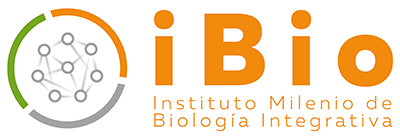LINES OF RESEARCH
Study of molecular mechanisms of organisms in response to environmental changes
 This line of research looks to understand how plants and fungi perceive environmental signals, and what produces those transcriptional, metabolic and phenotypic changes. Work is also being done to identify the effects that light has on circadian time and on the control of fungal physiology. The role of phenotypic biodiversity in adaptation to cold will be studied, at this point yeasts are key models of how they have adapted to temperature fluctuations.
This line of research looks to understand how plants and fungi perceive environmental signals, and what produces those transcriptional, metabolic and phenotypic changes. Work is also being done to identify the effects that light has on circadian time and on the control of fungal physiology. The role of phenotypic biodiversity in adaptation to cold will be studied, at this point yeasts are key models of how they have adapted to temperature fluctuations.
Study the effect of environmental cues on interspecies dynamics
 This line of work looks at how organisms deal with environmental changes in the presence of other species, whether for benefit or for harm. Here the research is focused on molecular mechanisms. Environmental and biotic signals are integrated, here the experimental models will focus and mainly studied on Botrytis and Trichoderma.
This line of work looks at how organisms deal with environmental changes in the presence of other species, whether for benefit or for harm. Here the research is focused on molecular mechanisms. Environmental and biotic signals are integrated, here the experimental models will focus and mainly studied on Botrytis and Trichoderma.
Design and develop molecular loops and analyze environmental transcriptional memory
 This line of research will develop new sets of synthetic controllers, light information processing (optogenetic switches) or molecular compounds (nitrate signal, signals similar to quorum sensing). For example, for the design of rewired transcriptional networks or the addition of synthetic circuits such as coherent/incoherent feedback loops. Here, tests of the models derived from lines 1 and 2 are generated.
This line of research will develop new sets of synthetic controllers, light information processing (optogenetic switches) or molecular compounds (nitrate signal, signals similar to quorum sensing). For example, for the design of rewired transcriptional networks or the addition of synthetic circuits such as coherent/incoherent feedback loops. Here, tests of the models derived from lines 1 and 2 are generated.Implementation of open-source technologies and encouragement of open science
 Our Institute is committed to achieving a lasting impact in education. In this sense, we are building capacities and promoting public participation in the biological sciences. We plan to create a platform of open-source technologies for research and teaching in biology and bioengineering. This involves the creation of open access software, hardware and wetware resources for efficient genetic construction and testing, new tools to obtain fluorescence imaging of plants and fungi, among other activities. The arrival of customizable manufacturing tools, such as 3D printers and laser cutting machines, combined with free software and easy-to-program microcontrollers, will enable low cost self-manufacturing of scientific devices.
Our Institute is committed to achieving a lasting impact in education. In this sense, we are building capacities and promoting public participation in the biological sciences. We plan to create a platform of open-source technologies for research and teaching in biology and bioengineering. This involves the creation of open access software, hardware and wetware resources for efficient genetic construction and testing, new tools to obtain fluorescence imaging of plants and fungi, among other activities. The arrival of customizable manufacturing tools, such as 3D printers and laser cutting machines, combined with free software and easy-to-program microcontrollers, will enable low cost self-manufacturing of scientific devices. ESPAÑOL
ESPAÑOL



